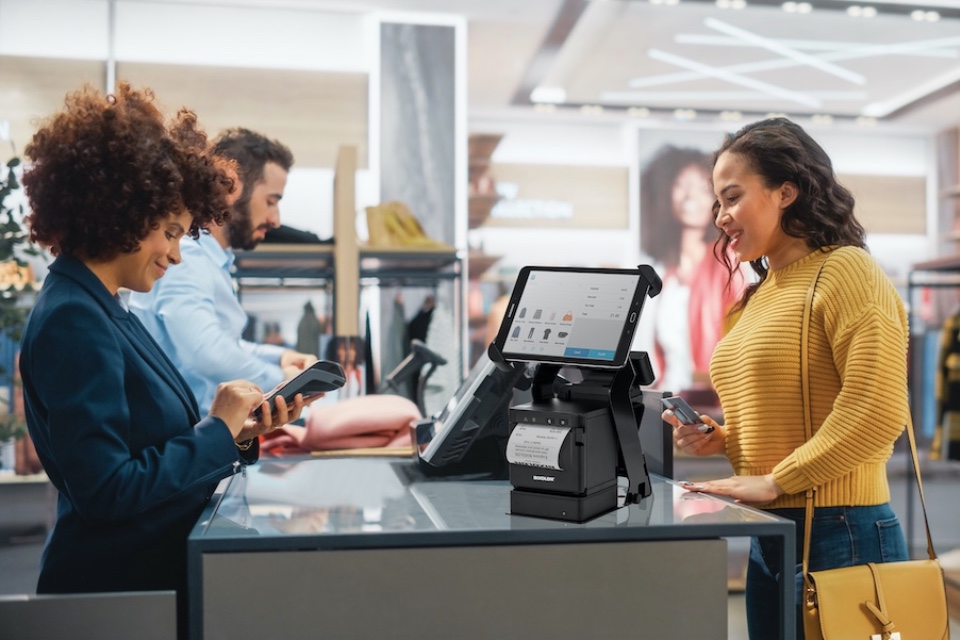By Gav Winter (pictured, above), CEO at RapidSpike
The upcoming holiday season – including the renowned Black Friday – holds immense significance for online retailers. As early as the end of October, the shopping frenzy begins with enticing discounts that continue throughout December and after Christmas with Boxing Day sales, making it an unparalleled retail period.
In 2022, US consumers shattered records by spending a staggering $9.2 billion on Black Friday, proving the popularity of discount events despite economic challenges. However, this surge in online shopping also makes it an attractive target for cyberattacks, with hackers seeking to exploit unsuspecting customers.
The escalation of payment scams and the increasing sophistication of cybercriminal tactics highlight the substantial financial risks faced by retailers without robust security measures. Furthermore, the surge in website traffic during this high-demand period can strain website performance, potentially compromising the overall user experience.
Given these challenges and the vital importance of website performance and reliability, there is no better time for retailers to put preparations in place.
Avoid online traffic jams
In 2023, the eCommerce industry is grappling with a multitude of challenges that require innovative solutions, particularly in the face of intensified web traffic during peak shopping seasons. The ever-increasing customer demand and evolving online expectations set the stage for heightened competition. Today’s customers demand nothing less than seamless shopping experiences, characterised by lightning-fast website performance and immersive features like augmented and virtual reality, for example.
However, meeting these expectations while maintaining website reliability during the holiday shopping season is a complex task. Slow-loading and underperforming websites pose a significant risk, potentially frustrating customers to the point of cart abandonment and seeking alternatives.
A lagging site can disrupt the flow of shoppers as they explore and add items to their carts, undermining the convenience and enjoyment of the shopping experience. Impatient buyers are more inclined to abandon their carts, leaving behind potential purchases. These abandoned carts not only translate into lost sales but also represent missed opportunities to engage with customers and foster brand loyalty.
Data from Statista underscores the critical importance of a seamless user experience in online shopping. In the second quarter of 2023, approximately 85% of mobile orders in the UK were left uncompleted, with seven out of 10 carts abandoned on computers as well. This evidences the significance of an optimised website, especially when competitive prices for similar products are available elsewhere.
To combat this challenge, online retailers must prioritise website optimisation to ensure swift and seamless experiences for their customers, especially during high-traffic periods like Black Friday. A responsive and well-optimised site not only reduces the risk of cart abandonment but also enhances customer satisfaction, encourages repeat business, and reinforces a positive brand image.
The rising threat of cybersecurity
While the digital age has brought tremendous opportunities for online retailers, it has also increased the threat of cybersecurity breaches and data theft, particularly during high-traffic periods like Black Friday.
One of the most insidious among these threats to the eCommerce sector is the Magecart skimming attack. This type of attack involves cybercriminals injecting malicious code into a retailer’s website, allowing them to steal customers’ payment data. With the holiday season approaching, these attacks become even more tempting for cybercriminals seeking to capitalise on the surge in online shopping.
But Magecart attacks are the tip of the iceberg. Cybersecurity threats come in various forms, including distributed denial-of-service (DDoS) attacks, ransomware and phishing attacks.
Online retailers must be prepared to defend against these threats to ensure the security of their customer’s data and the reliability of their websites.But, strategies and solutions for website owners must encompass the full spectrum of web health: performance, reliability, and security.
A multi-pronged defence and optimisation strategy
Online retailers must adopt a holistic approach to address these challenges, safeguard their customers’ trust, and optimise their websites for the upcoming holiday shopping rush. While monitoring and optimisation are essential year-round, specific tools can help during busy periods like Black Friday and Cyber Monday:
1. Implement a layered security approach
The best approach to eCommerce security is a layered one that uses multiple tools. Online businesses must have security measures in place to both prevent and detect attacks. Cyber attackers are constantly devising new ways to disguise their techniques, so it’s crucial to analyse your site for vulnerabilities, as well as attacks in progress.
2. Conduct stress testing
To prepare for the holiday season, carry out stress testing to understand your website’s normal performance limits. Scaling up your infrastructure is vital to handle the increase in traffic. This could involve adding more machines or using auto-scaling and load balancing for cloud-based solutions.
3. Implement uptime monitoring
Uptime monitoring is essential to ensure your website remains accessible during busy sales periods. Use uptime monitoring tools to detect issues and ensure prompt resolution. In case of problems, leverage social media to keep customers informed and consider extending the same discounts to customers who couldn’t access them on the sales day.
4. Utilise performance testing
Prioritise website performance by conducting load testing to understand your site’s capacity and potential bottlenecks. Ensure static content is delivered from a content delivery network (CDN) to enhance loading times. Implement load balancers to distribute server loads and consider serverless cloud technologies for scalability.
5. Synthetic monitoring
This can play a crucial role by providing a comprehensive view of the user experience. It ensures that website owners can meticulously track the entire customer journey, starting from the home page and extending to product pages, item selection, cart management, and the checkout process. By regularly conducting synthetic checks, website owners can rest assured that these vital processes are functioning correctly and consistently over time. This proactive approach not only helps identify and address issues before they impact real users but also contributes to maintaining a seamless and reliable online experience, ultimately leading to higher customer satisfaction and improved website performance.
Mitigating the effects of holiday season traffic
Black Friday and the holiday season present both opportunities and challenges for online retailers. While the potential for increased sales is enticing, the risk of cyberattacks and website performance issues looms large. Protecting and optimising your online retailer website is not just about safeguarding your business for a single day; it’s about building trust with your customers for the long term.
A comprehensive approach that combines cybersecurity measures, performance optimisation, and synthetic monitoring is essential. By implementing these strategies and staying vigilant, online retailers can ensure their websites remain operational, customer-friendly, and secure throughout the demanding holiday season. Remember, preparation today will safeguard your reputation and revenue for many years to come.







